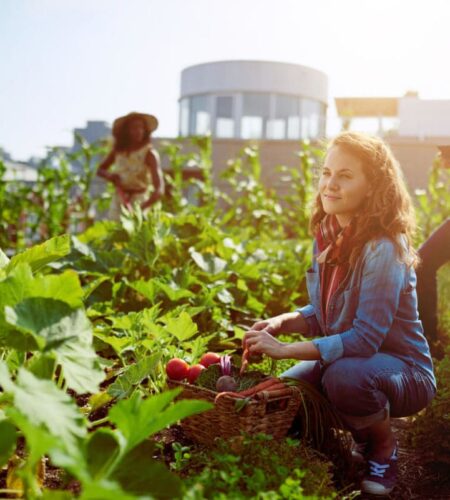In the midst of bustling city life, a quiet revolution is taking place. Millennials are turning to urban farming, transforming rooftops, balconies, and small plots of land into thriving green spaces. This movement towards homegrown produce is driven by a desire for sustainability, self-sufficiency, and a deeper connection to the food consumed daily.
Urban farming offers a solution to the growing concern about food security and environmental impact. With the rise of industrial agriculture, many have become disconnected from the source of their food. Urban farming allows city dwellers to reclaim some of that lost connection, providing a tangible way to grow and harvest fresh produce. It’s a step towards reducing the carbon footprint and reliance on long supply chains that contribute to environmental degradation.
The appeal of urban farming goes beyond sustainability. It’s about taking control of one’s food supply and knowing exactly what goes into it. There’s a growing interest in organic and pesticide-free produce, and the best way to ensure quality is to grow it oneself. Urban farms and gardens provide an opportunity to cultivate a variety of fruits, vegetables, and herbs, all free from harmful chemicals.
Urban farming also brings a sense of accomplishment and well-being. Tending to plants, watching them grow, and harvesting the fruits of labor can be incredibly rewarding. It’s a form of therapy, a way to de-stress and unwind from the demands of urban life. The act of nurturing plants fosters a sense of patience and mindfulness, qualities that are often lost in the hustle and bustle of the city.
Community gardens are a significant aspect of the urban farming movement. These shared spaces allow residents to come together, collaborate, and share the bounty of their efforts. Community gardens promote social interaction, providing a platform for neighbors to meet, learn from each other, and build stronger bonds. They are places of education and empowerment, where skills are shared, and a collective sense of ownership is cultivated.
The rise of technology has also played a role in making urban farming more accessible. From vertical gardens and hydroponic systems to smartphone apps that guide planting schedules, technology has provided innovative solutions to the challenges of urban agriculture. These advancements make it easier for even the most novice gardeners to get started and succeed in their urban farming endeavors.
Urban farming is not just a trend; it’s a lifestyle choice that reflects a broader shift towards sustainability and mindfulness. As more millennials embrace this practice, cities are becoming greener, and communities are becoming more connected. Urban farming is a testament to the power of grassroots movements to effect change, one garden at a time.


